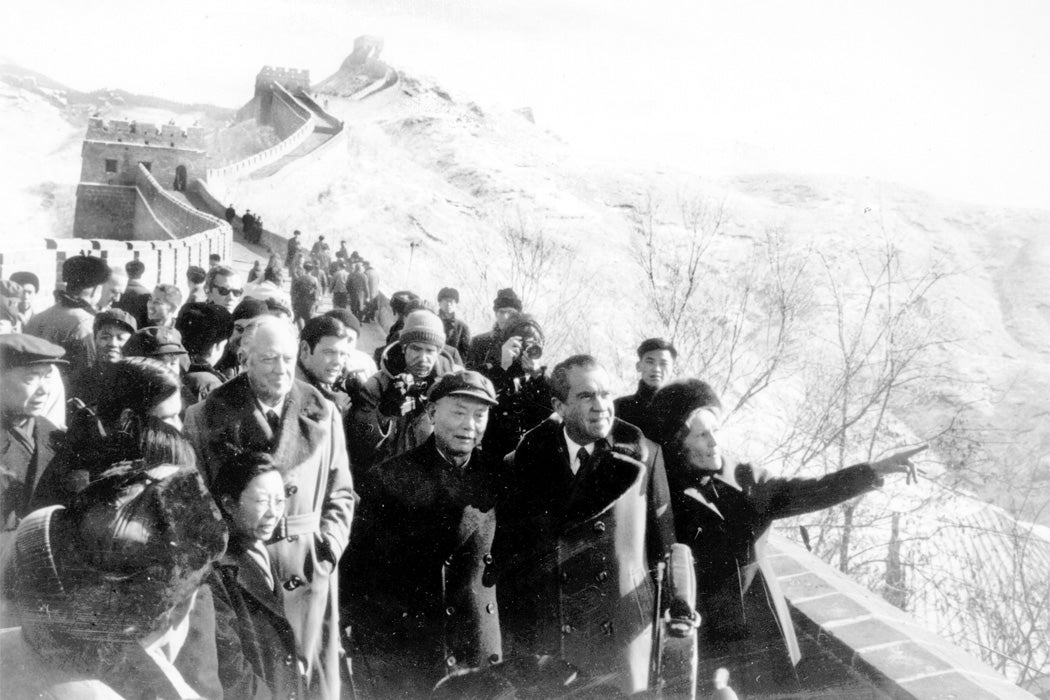This month, China celebrates the seventieth anniversary of the foundation of the People’s Republic of China. And 2019 marks the fortieth anniversary of the U.S.’s diplomatic recognition of the PRC in 1979. Why the thirty-year gap? In three words: The Cold War. The U.S. supported the Nationalist forces of Chiang Kai-shek after their defeat in the Chinese civil war. For three decades, Taiwan, where the Nationalists retreated to, was officially “China” in U.S. eyes.
Following Richard Nixon’s historic 1972 visit to mainland China, all of this began to change. Nixon’s trip began the process of opening diplomatic, cultural, and economic relations between the U.S. and China. As one of most pugnacious Cold Warriors, Nixon’s reversal was ironic, to say the least.
Weekly Newsletter
In the late 1940s and early 1950s, the question of “who lost China” to the communists was a political weapon used by the political Right to pummel the administration of Harry S. Truman. Foreign Service officers—particularly John S. Service and John Paton Davies—who served in China in the 1940s were targeted as communist sympathizers and “fellow travelers.”
Both Service and Davies had seen the obvious in the early 1940s: China was then partially occupied by Japan—and split between Communist and Nationalist forces. The situation was clearly headed toward civil war. But the U.S. State Department greeted their analysis with disbelief. The China Hands, as they were known, also thought Mao Zedong’s Chinese Communist Party (CCP) would ultimately defeat the Nationalists. Here again, they weren’t taken seriously. At the time, almost all the American eggs were in the Nationalists’ basket.
Service and Davies urged U.S. to support Mao for two reasons: the war against Japan and, as the scholar Jingbin Wang details in the Journal of American-East Asian Relations, to counter the influence of the U.S.S.R. The Soviets were funding, training, and arming the Communist Party of China (CCP). Wang writes that for these Americans the “guiding assumption [was] that no regime could become a genuine Communist one without Moscow’s ideological guidance and Soviet material aid.” And the way to block that was, according to Service and Davies, to have some influence over Mao.
Other Americans saw it very differently. After the declaration of the PRC, Congressman (later Senator) Nixon and Senator Joseph McCarthy pilloried the China Hands and blamed them for the “loss” of China. (The assumption that China was America’s to win or lose wasn’t much questioned.) Davies was subjected to nine separate investigations over his alleged communist connections. Service was very publicly fired by the Secretary of State in 1950. Seven years later, the Supreme Court would find his dismissal had been illegal. Wang writes:
The red-baiters have long been discredited, but they were not entirely wrong. Service and Davies did champion the CCP’s cause at the expense of Chiang Kai-shek’s Nationalist government. Both American Foreign Service officers have been remembered in China as leading advocates of CCP-U.S. relations. Yet it does not follow that they were promoting a Communist government in China.
Wang argues that many Americans assumed or hoped that, once victorious, Mao would revert to his own nationalist roots. They saw Yugoslavia, where the communist leader Tito had broken with the Soviets in 1948, as the model they hoped Mao would follow.
There was, in fact, a messy ideological divorce known as the “Sino-Soviet split.” By the mid-1960s, it had turned the bipolar world of the Cold War into something rather more complicated. China never became more democratic, however. The CCP maintained its grip on power. This turned out not to bother the business interests eager to see Nixon, the ex-Cold Warrior, go to China. Ideologies can be mutable things: China’s post-Mao transformation into a kind of authoritarian capitalism was very good for business.







